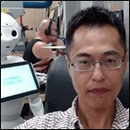9th Aurora Forum
ISC 22
Vector Engine is the key piece to accelarate, advance and expand the possibilities of your research and work
NEC have developed a Vector Engine (VE) for accelerated computing using vectorization, with the concept that the full application runs on the high performance VE and the operating system tasks are taken care of by the Vector Host (VH), which is a standard x86 server. This is the first time that the NEC SX series vector processor is integrated transparently into a Linux software environment. This allows the VE to concentrate on providing the best application performance. The SX-Aurora TSUBASA VE is flexible in sizing, can be water or air cooled, with an outstanding 48 GB HBM2 memory with a bandwidth of up to 1.53 TB/s and a comparatively low energy consumption with even better performance with the upcoming third generation of VE cards. Over the years a large amount of applications from different areas have been covered with especially good performance on simulation, weather forecasting, disaster prevention, resource exploration or oil and gas seismic imaging. Besides these applications the VE strongly supports Artificial Intelligence, Machine Learning, Big Data Analytics and Deep Learning to name a few.
On this page you'll find some examples explained in technical articles and in our upcoming webinar
Session 1. Applications of CFD aided by the high-performance computing platform in the construction industry of Japan

Applications of CFD aided by the high-performance computing platform in the construction industry of Japan
Presenter: Kota Enoki, Research Engineer, Obayashi Corporation
Abstract
As the performance of computers has been improving dramatically in recent years, the applicability of HPC (High Performance Computing) is rapidly expanding. Obayashi, one of the largest construction companies in Japan, has been developing CFD (Computational Fluid Dynamic) simulation technology by utilizing HPC aiming to enhance the safety of structures and to streamline the design process in actual projects. In this session, the benefits of utilizing HPC is presented by introducing two topics in the wind engineering field (the wind load assessment of high-rise buildings / the wind climate assessment for offshore wind energy).
Session 2. Implementation of Artificial Ego based on the extended Riemann sphere

Implementation of Artificial Ego based on the extended Riemann sphere
Presenter: Kosuke Tomonaga, Collaborative Researcher, The University of Tokyo / SoftBank Robotics Corp.
Abstract
Our Artificial Ego is a multi-layer neural network with qubits of the extended Riemann sphere, working on the SX-Aurora Tsubasa. It will be operated in Super Formula, an open-wheeled racing series.
The zero and infinity (corresponding to one) of a Riemann sphere indicate that a neuron balance is achieved and lost respectively. Each layer attempts to achieve zero-sum balance by compiling the neuron output and sending feedback to neurons. By receiving feedback, a neuron promotes upper layer actions when it reaches one and it promotes lower layer learning when it reaches zero. Neurons promoting each other strengthen their connections.
Session 3. Composing NEC Vector Engines with GigaIO Memory Fabric

Composing NEC Vector Engines with GigaIO Memory Fabric
Presenter: Matt Demas, Chief Technical Officer, Global Sales, GigaIO
Abstract
GigaIO is the creator of next-gen data center rack-scale architecture for Artificial Intelligence (AI) and High Performance Computing (HPC) solutions. GigaIO’s FabreXTM technology enables an entire server rack to be treated as a single compute resource. Resources normally located inside of a server (GPUs, FPGAs, Vector Engines,storage), can now be pooled in accelerator or storage enclosures, where they are available to all of the servers in a rack. These enclosures continue to communicate over native PCIe for the lowest possible latency and highest bandwidth performance, just as they would if they were still plugged into the server motherboard. This is an overview of the GigaIO FabreX™ memory fabric and benchmarks using the NEC SX-Aurora vector processors. In this presentation, we show the ability to re-architect systems to fully utilize the leading performance of the NEC SX-Aurora TSUBASA vector processors.